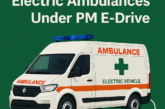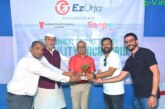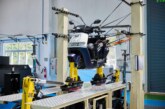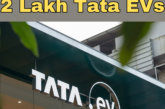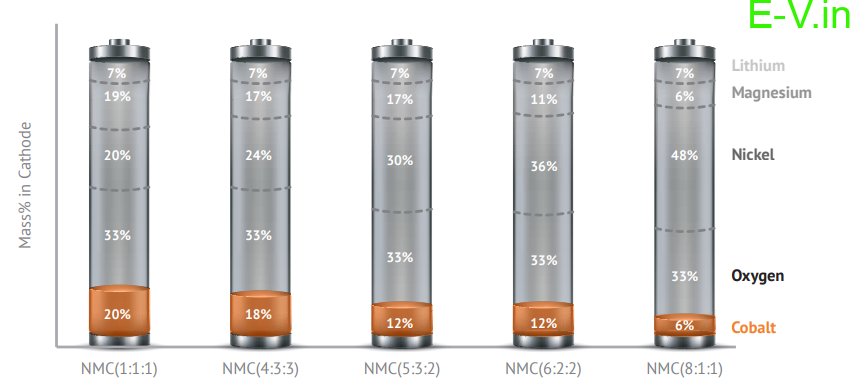
Lithium-ion battery technology & recycling
market, potential & opportunity in India
Lithium-ion is something that is in high demand all over the world today, as it is mostly used in electric vehicles. In India, the lithium-ion batteries market is expected to grow significantly in the next five years. The annual lithium-ion battery market in India to increase from 2.9 GWh in 2018 to reach 132 GWh in 2030 at a CAGR of 37.5%. So let us see about Lithium-ion battery technology & recycling.
The growth of this market is seen by government initiatives such as the National Electric Mobility Mission Plan 2020 to bring in 6-7 million electric vehicles on Indian roads by 2020 and by 2022 by targeting 175 GW installation of renewable energy.
As lithium-ion batteries consumption increases there will be also increased in the spent batteries. If it is ignored, it can become a health and environmental hazard. It is not the only risk to our health but we may also miss out on some precious metals from the spent batteries.
The recycling of the metals and other natural resources from a spent battery through mechanical and metallurgical processes is the best option to make use of those spent batteries. The extracted content can be re-used to manufacture more batteries.
We have also discussed earlier recycling of the lithium-ion batteries.
As India imports lithium from other countries as lithium reserves are not available in India. Reusing these extracted metals will help in manufacturing more batteries. This will also help to overcome the dependency on imports of lithium.
To make battery manufacturing sustainable it is mandatory to invest early in large scale recycling infrastructure.
The Indian government has set up a goal to achieve electric mobility but the high price of EVs is becoming a hindrance. 40-50% of the cost of EVs is because of the batteries.
The government must focus on recycling for sustainable solutions. In that regard, the government had announced that they are into the process of framing a recycling policy for li-ion batteries under which tax sops would be considered for the recyclers. The proposed policy also imposes liability on battery producers to collect spent batteries under the Extended Producer Responsibility (EPR) norms.
Lithium-ion battery technology & recycling
So, let us discuss the current state of the lithium-ion battery market, the potential of recycling and opportunities and challenges in India.
Before we jump into the lithium-ion market and recycling, let us know about the lithium-ion battery technology
Lithium-ion battery technology
Lithium-ion batteries are energy storage devices that convert chemical energy into electrical energy. A single cell consists of two electrodes- a positive electrode or a cathode, a negative electrode or an anode.
Between the 2 electrodes, a separator layer which consists of an electrolyte that allows the movements of electrons or irons.
Basically, there are 2 types of batteries
- primary
- secondary
Primary also is known as single-use batteries that cannot be recharged.
Secondary batteries can be charged and recharged and Li-ion batteries come under this type.
Lithium-ion batteries consist of five primary metals
Lithium-ion batteries consist of five primary metals such as aluminum, copper, cobalt, iron, and lithium.
The anode consists of copper foil covered by a fine layer of carbon whereas the cathode contains the aluminum, cobalt, and lithium metals. Out of these the cobalt and nickel are rare metals and are available in selected regions of the world.
These metals make 50-60% of the cost of the li-ion batteries and if any changes in the price of these metals will directly impact the cost of the batteries as well. As there is a high demand for li-ion batteries for 4-5 years the price of these metals is also rising high.
Types of lithium-ion batteries
The most common types of lithium-ion batteries currently in use are Lithium Cobalt Oxide (LCO) and Lithium Nickel Manganese Cobalt Oxide (NMC).
- LCO has the highest market share of 37% because it used is mostly small portable devices such as mobile phones, tablets, laptops, and cameras.
- NMC is mostly used in electric vehicles and medical devices and is ranked the second highest with a market share of 29%.
The various lithium-ion battery types
- LCO (LiCoO2)
- NMC (LiNiMnCoO2)
- LMO (LiMn2O4)
- NCA (LiNiCoAlO2)
- LFP (LiFePO4)
In India, mostly used batteries are NMC and LFP batteries.
NMC batteries life is for 2-3 years whereas LFP batteries stay for 5-7 years. The NMC is most commonly used in the last 3-4 years in the Indian market especially in EVs. However, LFP batteries started gaining more traction in the Indian market.
At current researchers are working on an 8:1:1 chemistry ratio of NMC batteries to bring the price down by reducing the cobalt’s share in the overall battery mix.
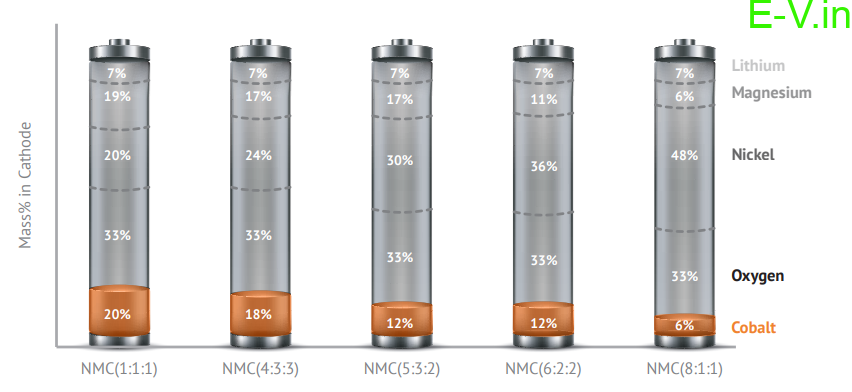
As can be seen from the above chart, recycling could play an important role as the amount of cobalt recovered from the recycling of NMC (1:1:1) battery now can be used to energize three NMC (8:1:1) batteries in the next few years.
Lithium-ion battery market growth in India
The lithium-ion battery market growth in India is set to grow from 2.9 GWh in 2018 to reach about 800 GWh by 2030.
- Currently, 65% of lithium-ion batteries are used in the telecom sector, data centers, street lights, and other small consumer applications
- remaining 35% market is used by the electric vehicles segment and
- by 2030 it is expected to reach 80% of usage towards electric mobility.
Some of the initiatives of the government of India that helps to grow the li-ion batteries market in India are
- Electric Mobility Mission Plan 2020 -6-7 million EVs on Indian roads by 2020.
- Installation of 175 GW of renewable energy by 2022 and 500 GW by 2030.
As per the mission, a 5 year phased manufacturing program (PMP) till 2024 was planned to set up some large scale integrated batteries and cell manufacturing plants in India and to localize production across the entire EV value chain.
Recently the Indian government announced its plan to build large factories to make lithium-ion batteries at an investment of about ₹50,000 crores.
What is the need for recycling?
The battery manufacturers are making efforts to set up large plants to produce affordable batteries to sell and fit in large numbers.
But here, there is one more thing to consider, the battery life and when they end their life after they used what happens to them. Firstly they give limited life and can perform 500 to over 10,000 cycles of charging and discharging depending on the chemistry, size, configuration, and purpose.
The portable batteries used in consumer electronics and power tools are in larger amounts and a large amount of a scrap of stock can be obtained from the telecom sites.
When the world is looking forward to shifting to EVs and other li-ion products, the production size is also expected to be very high. The production of huge amounts of batteries will lead to a rise in the dead batteries that need to be recycled in an effective way.
As the production increases, the increase in the global consumption of li-ion battery raw materials such as cobalt, lithium, and copper is also expected to increase by 20 times by 2030.
The reserves and supply of these metals are in selected regions of the world mostly outside India hence making it rare available metals. Therefore recycling these precious metals from spent batteries is very important especially for countries like India, which is totally dependant on imports for these metals.
Damage to health and the environment?
Due to the high amount of heavy metals like copper, nickel and organic chemicals may contaminate soil and water if it disposed of with the municipal waste that results in landfills.
If not handled properly. lithium may cause health risks to humans and animals. It gets absorbed and accumulates in edible plants and can enter the food chain which may cause various genetic, reproductive, and gastrointestinal problems.
Therefore to reduce India’s dependence on imports of metals of lithium-ion batteries, recycling spent batteries to extract precious metals makes complete business sense.
Battery’s second life
Li-ion batteries used in EVs have a shelf life of fewer than 10 years. After 5 to 8-year duration, the power generated by the batteries is not sufficient for an EV to achieve the desired range. Therefore these batteries can be used for other secondary applications as these ‘spent’ batteries still retain 70%–80% of their initial capacity and can function for several years.
It can be used for
- Electric power management for residential and commercial spaces
- Power grid stabilization (firming up the peak power)
- Renewable energy system firming by providing storage
Market opportunity- battery recycling in India
In India, 50% of batteries that reach end-of-life will reach to the recyclers around the world due to
- Battery hoarding or storing
- Battery disposal in waste
- Second life usage in other applications
The recycling market in India is expected to pick up from the year 2022 onwards as the li-ion batteries which are currently in use will reach their end of life.
The annual recycling market is expected to reach around 22-23 GWh by 2030, which is around a $1,000 million opportunity.
(Source-JMK Research & Analytics)
For any promotions and advertisements on electricvehicles.in, please send an email to support@electricvehicles.inFor the latest electric vehicles news, followelectricvehicles.in on Twitter, Instagram, Facebook and subscribe to our YouTube Channels-English, Hindi & Telugu




